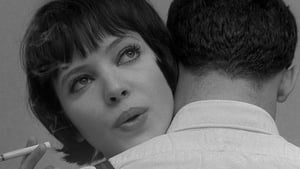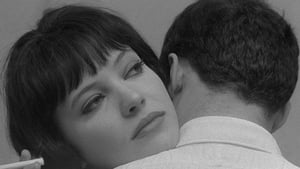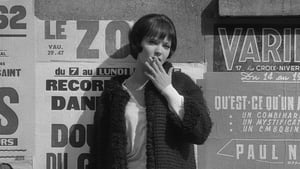Contact: [email protected]
Video Sources 0 Views

Vivre Sa Vie Colorized 1962: Rediscovering the Beauty of Best Old Films
Synopsis
[ez-toc]





Introduction
In the vast expanse of cinematic history, there are films that transcend their temporal boundaries, captivating audiences across generations. “Vivre Sa Vie Colorized 1962” stands as a beacon of artistic brilliance, drawing attention not only for its intrinsic narrative but also for the groundbreaking endeavor to colorize a classic. This article explores the significance of “Vivre Sa Vie Colorized” as an old film, delves into the art of colorization and film restoration, and navigates the debate surrounding the preservation of cinematic heritage.
Read Media File Transfer Agreement: Terms and Conditions
Read FAQ
Brief Overview of “Vivre Sa Vie Colorized”
“Vivre Sa Vie,” directed by the iconic Jean-Luc Godard, is a cornerstone of the French New Wave movement. Originally released in 1962, the film tells the story of Nana Kleinfrankenheim, portrayed with captivating depth by Anna Karina. Nana’s journey through the labyrinth of life, exploring themes of freedom, constraint, and identity, encapsulates the essence of French New Wave cinema. Godard’s unconventional storytelling and innovative cinematography cemented “Vivre Sa Vie Colorized” as a classic of its time.
The Concept of Colorization in Movies
The concept of colorizing old films has been a subject of debate in the cinematic realm. The advent of technology has enabled filmmakers to revisit classics and infuse them with a spectrum of colors, breathing new life into black and white masterpieces. While purists argue that colorization compromises the authenticity of the original work, proponents view it as a gateway to making these films more accessible to modern audiences. “Vivre Sa Vie Colorized 1962” boldly steps into this discourse, challenging traditional norms.
The Importance of Preserving and Rediscovering Old Films
Old films are not merely relics of the past; they are windows into the cultural and artistic landscapes of their time. Preserving these cinematic gems is crucial to understanding the evolution of storytelling and visual language in film. “Vivre Sa Vie Colorized” holds a unique position in this continuum, with its colorized version offering a fresh perspective on a narrative etched in the annals of cinema.
The Story Behind “Vivre Sa Vie Colorized”
Jean-Luc Godard’s “Vivre Sa Vie Colorized” is a tour de force, showcasing the director’s mastery in capturing the complexities of human existence. Nana Kleinfrankenheim, played by the enigmatic Anna Karina, embarks on a journey that mirrors the societal upheavals of the 1960s. Nana’s pursuit of personal freedom, juxtaposed against the constraints imposed by society, becomes a poignant exploration of existentialism.
The film unfolds in twelve episodic chapters, each presenting a vignette of Nana’s life. From her foray into prostitution to her philosophical musings, Godard weaves a tapestry that transcends the conventional narrative structure. Nana’s character becomes a symbol of the era’s shifting paradigms, and Karina’s portrayal remains a testament to the actress’s ability to convey profound emotion with nuanced simplicity.
The Art of Colorization and Film Restoration
Colorization, once considered a contentious practice, has evolved into a sophisticated art form. The Criterion Collection’s Blu-ray edition of “Vivre Sa Vie Colorized” exemplifies this evolution, employing advanced techniques to respect and enhance the film’s original aesthetic. The colorization process involves meticulous attention to detail, ensuring that every shade aligns with the director’s vision.
AI technology has played a pivotal role in the restoration process, offering a level of accuracy that was previously unattainable. The colorized edition of “Vivre Sa Vie Colorized” presents a visual feast without compromising the integrity of Godard’s work. It serves as a benchmark for how technology can be harnessed to breathe new life into old films, ushering them into the digital age while preserving their essence.
Examining the Visual and Audio Enhancements in the Colorized Edition
The Criterion Collection Blu-ray edition of “Vivre Sa Vie Colorized” not only reimagines the film in color but also elevates the viewing experience through enhanced visuals and audio. The meticulous restoration ensures that the film’s original cinematography remains intact, with the added dimension of color amplifying its impact. The vibrancy of Nana’s world, from the dimly lit streets of Paris to the intimate moments in cafes, is a testament to the thoughtful approach taken during colorization.
The audio enhancements contribute to the immersive quality of the film. The ambient sounds of 1960s Paris, the subtle nuances of dialogue, and the evocative musical score resonate with newfound clarity. Viewers are transported into the heart of the narrative, experiencing “Vivre Sa Vie” as if for the first time. The audio-visual synergy enhances the emotional depth of the film, making it a captivating journey for both purists and newcomers alike.
The Significance of “Vivre Sa Vie Colorized” in French New Wave Cinema
Jean-Luc Godard’s directorial style, characterized by innovative techniques such as jump cuts and direct address to the audience, defines the French New Wave movement. “Vivre Sa Vie” exemplifies Godard’s ability to challenge conventional storytelling norms, infusing a sense of realism into the narrative. The film’s fragmented structure mirrors the fragmented identity of its protagonist, Nana.
Placing “Vivre Sa Vie” within the context of French New Wave cinema unveils its role as a trailblazer in the exploration of unconventional narratives and avant-garde techniques. Godard’s influence reverberates through generations of filmmakers, establishing “Vivre Sa Vie” as a touchstone in the evolution of cinematic language.
Preserving Cinematic Heritage: Why Old Films Matter
In the fast-paced world of contemporary cinema, the value of classic films often takes a back seat. However, these cinematic relics offer a glimpse into the cultural tapestry of bygone eras. “Vivre Sa Vie Colorized 1962” becomes a bridge between the past and the present, inviting audiences to appreciate the timeless beauty of storytelling.
Old films serve as repositories of cultural memory, preserving the nuances of language, fashion, and societal norms. The colorization of these films becomes a means of making them more relatable to a new generation of viewers while maintaining their historical and artistic significance.
The Debate on Colorization: Balancing Nostalgia and Artistic Integrity
The debate surrounding the colorization of black and white movies is nuanced, with strong arguments on both sides. Purists argue that altering the original visual language compromises the filmmaker’s artistic intent. On the contrary, proponents of colorization posit that it breathes new life into these films, making them more accessible and engaging for contemporary audiences.
“Vivre Sa Vie Colorized 1962” enters this discourse, challenging preconceived notions about the sanctity of black and white cinema. The careful consideration given to the colorization process ensures that the essence of Godard’s vision remains intact, while the addition of color opens the door to a broader audience.
Embracing the Past, Embracing the Future: Finding Value in Both Versions
Appreciating classic films in their original black and white format is undoubtedly a unique experience. The monochromatic palette often accentuates the mood and atmosphere of the narrative, offering a visual language that is distinct and evocative. However, the colorized version of “Vivre Sa Vie” invites viewers to embrace a different facet of its beauty.
By appreciating both versions, audiences can gain a more comprehensive understanding of the film’s impact. The original black and white format retains its timeless allure, while the colorized edition introduces a fresh perspective. Together, they create a harmonious narrative, each version contributing to the rich tapestry of cinematic history.
Where to Watch Colorized Versions of Classic Movies
For cinephiles eager to explore the world of colorized classic films, various online platforms and specialty stores cater to this niche. The Criterion Collection, known for its commitment to preserving cinematic gems, offers a curated selection of colorized editions, including “Vivre Sa Vie Colorized 1962.” Streaming services with dedicated classic film sections also provide avenues to discover and appreciate these reimagined masterpieces.
Emotional Impact Through Visual Aesthetics: The Role of Color in Cinema
The use of color in cinema extends beyond mere aesthetics; it serves as a powerful tool to evoke emotions and enhance storytelling. From the warm hues of nostalgia to the chilling blues of melancholy, color contributes to the overall sensory experience. “Vivre Sa Vie Colorized 1962” leverages this visual language to immerse viewers in the emotional landscape of Nana’s journey, intensifying the impact of each scene.
Exploring the psychological and narrative functions of color in film storytelling unveils its ability to shape perceptions and elicit visceral reactions. This synergy of visuals and emotions transcends the boundaries of time, making “Vivre Sa Vie” a timeless masterpiece in both its original and colorized iterations.
Conclusion
In the grand tapestry of cinema, “Vivre Sa Vie Colorized 1962” stands as a testament to the timeless allure of old films. Jean-Luc Godard’s masterful storytelling, coupled with the innovative approach to colorization and film restoration, catapults this classic into the digital age. As audiences embark on a journey with Nana Kleinfrankenheim, they are invited to embrace the diversity of film formats and experiences.
The colorized edition of “Vivre Sa Vie” offers a fresh perspective without overshadowing the original black and white version. It becomes a valuable tool for reimagining and revitalizing old movies, breathing new life into narratives that resonate across decades. As we navigate the debate on colorization, it becomes evident that embracing both versions allows us to appreciate the nuances of cinematic heritage while welcoming the future of storytelling.
In the end, “Vivre Sa Vie Colorized 1962” beckons cinephiles to embark on a dual journey—immersing themselves in the timeless charm of classic cinema and embracing the vibrant hues of innovation. It is a celebration of the past, a nod to the present, and an invitation to explore the ever-evolving landscape of cinematic artistry. As the credits roll, the echoes of Nana’s journey linger, reminding us that old films, whether in black and white or a spectrum of colors, remain eternally relevant in their ability to captivate and inspire.












